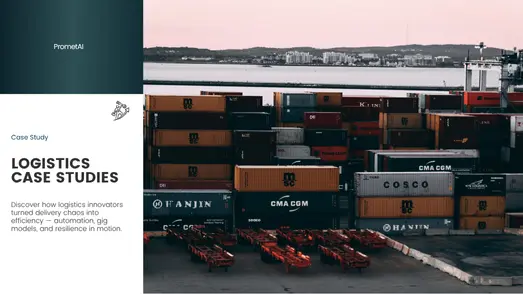Discover 3 logistics case studies showing how Veho, GEODIS & Ninja Van solved delivery, scale, and peak-season challenges with tech.
Case Study 1: Veho – Tech-Enabled Gig Model Disrupting Last-Mile Logistics
Company Overview
Veho has reimagined what last mile delivery can be by combining people, technology, and precision. Founded in 2016 in the United States, the company partners with retail and direct-to-consumer brands to create deliveries that feel personal, predictable, and efficient.
Supported by intelligent automation and delivery date prediction, Veho uses its network of independent drivers to deliver a seamless experience from checkout to doorstep. Through this model, the company has built one of the most adaptive and trusted delivery platforms in the logistics industry.
The final mile of delivery is where promises are either kept or broken. It is the point where technology meets human expectation, and for many carriers, it has become a point of failure. Companies like UPS, FedEx, and USPS were built for efficiency, not empathy, and in an era shaped by same-day expectations, that gap began to show.
Retailers found themselves fighting battles they could not control:
Missed deliveries that turned excitement into frustration.
Inconsistent driver performance that weakened brand reputation.
Poor communication that left customers guessing instead of knowing.
Limited visibility that made it impossible to predict or prevent problems.
The market needed delivery platforms that could connect drivers, customers, and brands within a single, intelligent system. Retailers were looking for a model that went beyond transportation. They wanted an innovation delivery approach that combined reliability with personalization.
Veho built a full-stack delivery platform designed to optimize every step of the process through technology and human-centered design.
Component | Value Delivered |
Driver marketplace with pre-bid routes | Predictable earnings, higher acceptance |
AI-based routing & load balancing | Fewer failed deliveries, shorter routes |
Photo proof + real-time alerts | Higher transparency & trust |
Customer rescheduling/self-service portal | Reduced exceptions + lower refund costs |
Built-in CX support team (chat, email, 24/7) | Brand-aligned delivery experience |
By giving drivers the freedom to select routes that match their schedules and pay expectations, Veho increased motivation and reliability. The addition of proof of delivery photo, self-service options, and customer rescheduled delivery capabilities strengthened communication and ensured accountability at every stage.
Results
Veho’s approach delivered measurable improvements that reshaped expectations in last mile delivery and brand satisfaction.
Achieved a consistent 99 percent on-time delivery rate across key markets.
Reduced failed delivery attempts by up to forty percent for top retail clients.
Strengthened customer loyalty, reflected in higher repeat purchase rates.
Expanded operations to fourteen major U.S. cities within two years.
Lowered returns and refund credits by nearly thirty percent for eCommerce partners.
Each outcome reinforced the strength of Veho’s technology-driven model, proving that precision, communication, and care can transform the final mile into a lasting advantage for both brands and customers.
Why It Works
Veho’s success comes from aligning the needs of every stakeholder, including drivers, customers, and brands, within a single system.
The gig model is optimized for driver satisfaction, ensuring high engagement and retention.
Predictive routing and communication tools solve the weakest link in last mile delivery, the doorstep moment.
Data-driven feedback loops allow merchants to continuously refine the customer experience.

Veho’s story showed that success in last mile delivery depends on designing for every participant: drivers, recipients, and brands alike. The company discovered that data and technology achieve real value only when guided by human understanding. AI delivery platforms perform best when they turn insight into action and accountability into trust.
Looking ahead, the future of innovation delivery belongs to companies that see logistics as a human experience, not just a technical process. Veho proved that when people and technology move in sync, every delivery becomes smoother, smarter, and genuinely meaningful.
